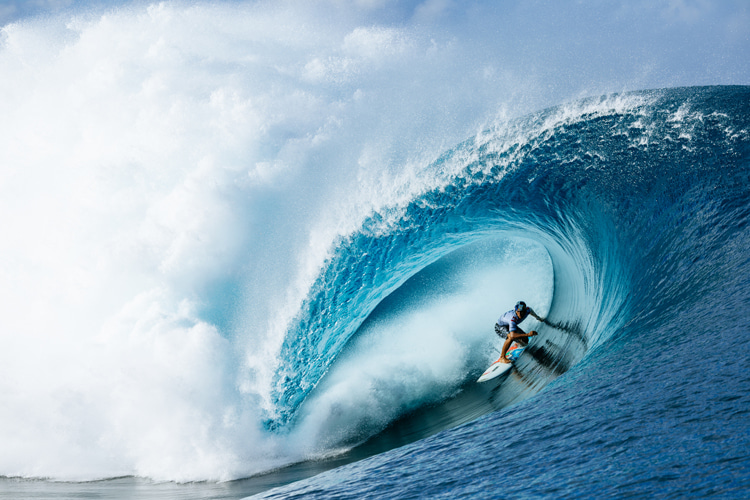
Surfboard leashes are usually seen as a safety device that ensures a surfer won’t lose their board after a fall, wipeout, or kickout.
Despite their underrated status when it comes to discussing surfing equipment and the upgrades in technology, the legrope (or the absence of it) is often involved in controversy.
Besides its immediate and clear function – to keep the surfer connected to its gear – the leash also prevents accidents. It’s a simple yet super smart invention.
Without them, boards can easily enter free-riding mode and hit other people who may be in the water.
Everything in a surfboard is a weapon – the nose, the fins, the tail, the rails, the deck, and the bottom.
Longboarders tend to avoid its use, citing the original spirit of surfing and the need to feel free while cross-stepping and hanging ten.
This practice resulted in injuries worldwide, as some of them were not able to control their logs after a wipeout or fall.
As a result, many coastal communities enforced the use of surfboard leashes in the lineup and threatened the violators with heavy fines.
There is also a small minority of shortboarders who opt to paddle out without the so-called kook cord.
The thing is, there’s nothing kooky about using a leash in the surf.
If you don’t think having a board by your side could be useful, at least it shows respect for everyone you’re sharing the lineup with.

The Kauli Vaast Case
Professional surfers always wear leashes, whether competing in two- or ten-foot waves.
However, on a big day at the 2025 Tahiti Pro in Teahupoo, Kauli Vaast surfed and won his opening round heat leashless.
Later, the 2024 Paris Olympic gold medalist revealed that in XXL swells and tricky conditions, it’s easier to be free from the board and quicker to get on the jet ski, pick up the backup board, and get back on the lineup.
When you’re getting pounded in shallow water with a sharp reef underneath you, having a surfboard to care for could be a burden.
But what are the pros and cons, advantages and disadvantages of ditching the legrope in waves of consequence?
Could Vaast’s practice become a widely adopted standard, for instance, in much bigger surf like Nazaré or Jaws?
Pros of Not Wearing a Leash
One of the main reasons for not wearing a leash during surf breaks like Teahupoo is to avoid being tombstoned.
In the world’s biggest and heaviest waves, a leash can drag you underwater when the board gets pulled in one direction by the wave and your body in another.
It’s as if your board acts like an anchor, keeping you under longer than is safe, especially dangerous in powerful, long-hold-down spots like Nazaré.
Then, there’s the obvious reduced risk of getting hit by your equipment. In extreme wipeouts, the board can slingshot back toward you under leash tension.
Without a leash, the board is more likely to be swept away rather than ricochet into you.
Makes sense, right?
It’s also important to stress that it is often easier to swim and duck-dive after a fall or unexpected end of the ride.
Consequently, no leash means less drag when swimming underwater, for instance, when a monstrous wall of turbulent whitewater approaches.
Finally, the idea of having less entanglement hazard sounds good, don’t you think?
In reef breaks like Teahupoo, a leash can snag on coral heads or underwater features. At places like Nazaré, the cord could tangle with rescue sled ropes and tow ropes.
And that is the last thing we want to happen.
The discussion around the use of leashes is also on in river surfing, where riders often see their cords entangled in the bottom floor.
Most river surfers are now transitioning to custom-made leashes with quick-release mechanisms.

Let’s Not Forget What We Lose
Now that Pandora’s box has been opened, and the idea of leash freedom in competitive surfing has become generally appealing, it’s time to remind everyone of the fairly great pros of wearing the cord in challenging conditions.
Whether we like it or not, when we lose our board, we also lose flotation. In big-wave surfing, the board doubles as an emergency floatation device.
Without it, you may have to swim a long way to safety in heavy currents, which can be exhausting and risky.
We’ve seen that so many times at Nazaré’s Praia do Norte.
The same applies to getting back to the lineup – having a board underneath our body can speed up the time to get back to the take-off zone.
And here, the more volume the surfboard has, the faster you’ll paddle.
Finally, if a loose board-turned-missile endangering other surfers is not enough reason to wear a leash, the absence of a platform to hold on to and point toward the beach or shore could make you think twice.
Words by Luís MP | Founder of SurferToday.com


Leave a Reply